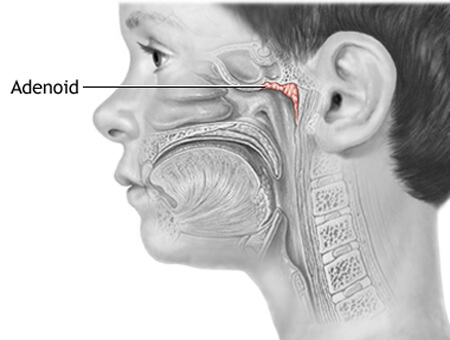
Adenoids are soft tissues located behind the nose, made up off lymph tissue. Usually adenoids shrink during adolescence and may disappear by Adulthood. In few cases Enlarged Adenoids can block Nasal breathing and contribute to Middle Ear fluid ear and Sinus infections. Adenoid removal and tonsillectomy often performed together.
Symptoms
Surgery
Adenoidectomy is usually permormed by Endoscopic guidance under general anesthesia. Patient will be discharged on the same day itself or the next day. Adenoids are ablated with help coblation technology. The plasma formed according to coblation process breaks down molecular bonds in tissue. Tissue ablated at relatively low temperature i.e 40°c – 70°c. Unique coblation method is zero blood loss, high precision in removal. Isolated Adenoidectomy will not give rise to post operative pain. Patient will immediately experience relief from snoring completely.
Post Operative Instructions
F.A.Q.
It’s very common for children to have adenoid enlargement. Adenoids are basically lymphoid tissue and are enlarged in response to various bacterial, virus infections. Another most common reason for adenoid enlargement is allergy usually mild to moderate enlargement of adenoid won’t cause much issue other than persistent cold, cough etc. When they enlarge to severe grade give rise to breathing difficulties like snoring, mouth breathing, runny nose, sleep apnea etc. Enlargement of adenoids are assessed by simple nasal endoscopy and x Ray nasopharynx.
Mild to moderate hypertrophy of adenoids are treated by antibiotics course, antiallergic medication and intranasal steroid sprays. Severe enlarged adenoids when causing breathing difficulty needs surgical removal. Surgery to remove adenoids is called adenoidectomy.
Intranasal steroids can be safely used up to 3-6 months depending on severity of adenoid enlargement and child’s allergic status. Growth related complications are very rare in children secondary to intranasal steroid use.
Adenoid infections and adenoid enlargement cause Eustachian tube dysfunction and middle ear fluid accumulation. Fluid in middle ear called serous otitis media , and if neglected give rise to deafness
